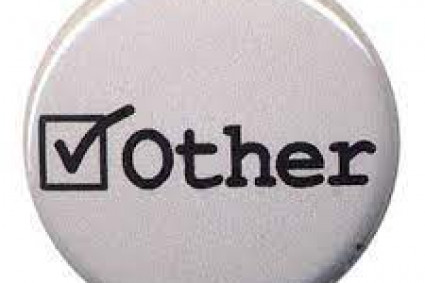
Introduction:
Embroidery, a historic art form, has evolved greatly by combining traditional techniques with modern innovations. Custom embroidery primarily showcases the intricate details and finesse of creating unique custom designs. In this blog, we will explore the anatomy of custom. embroidery in depth, analyzing all the factors that contribute to its beauty and precision. Whether you are a beginner or an experienced embroiderer, this study offers valuable information about the exciting world of custom embroidery: Choosing Fabric
The first step in Custom embroidery is to choose the right fabric. The fabric works because the paintings use fabric and its properties greatly affect the final result. Standard fabric used in custom embroidery includes:
Cotton: Soft and smooth, cotton is suitable for beginners and precise designs.
Linen: Known for its durability and texture, linen lends a rustic appeal to embroidered details.
Silk: Luxurious and smooth, silk is perfect for intricate and elegant designs.
Fabric: strong and thick fabric is perfect for mass embroidery.
Tools
The equipment used in custom embroidery is essential to achieve precision and finesse. Here are the essential pieces of equipment every embroiderer needs:
Needles: Embroidery needles come in different sizes and brands, each suitable for different fabrics and threads. Common types include safety pins, carpet pins, and hat pins.
Fasteners and Frames: These accessories keep the fabric taut, ensuring even tension and preventing wrinkling. Edges are usually round, while frames can be rectangular or square.
Threads: Embroidery comes in many colors and materials such as cotton, silk and metallic threads. The desire of the thread affects the feel and shine of the latest model.
Scissors: Sharp embroidery scissors are essential for cutting threads accurately and neatly.
Understanding Stitches: The Building Blocks
Stitches are the basic building blocks of custom embroidery. Each point type creates a unique texture and effect that affects the whole. Here are some common stitches used in custom embroidery:
Running Stitch: A basic stitch that creates a broken line that is used regularly to define and describe details.
Backstitch: Provides a smooth line, making it best for text and outlines.
Satin Stitch: Creates solid solid color areas perfect for filling shapes.
French Knot: Adds points of dimension to designs, regularly used in floral trims and embellishments.
Chain Stitch: Creates a series of loop stitches and creates a textured line.
Transferring the Design and Pattern
Transferring the design to the fabric is an important step in custom embroidery. There are several strategies to achieve this:
Tracing: Using a light source, such as a light box, the pattern is traced onto the fabric with a pencil or pen.
Iron-on Materials: Designs printed on unique transfer paper can be ironed onto the material, creating a temporary guide.
Stencil: Stencils allow you to reuse a design, ensuring consistency in more than one piece.
Embroidery Process: Sew Using Stitches
Creating custom embroidery requires careful planning and execution. Here’s a step-by-step guide to the method:
Design Selection: Select or create a design that matches your intended use and fabric type.
Fabric Preparation: Cut and prepare the fabric, making sure it is miles long and free of wrinkles.
Rings: Apply the material to the ring or frame, maintaining an even tension.
Thread Selection: Choose threads that complement the layout and fabric.
Sewing: Begin sewing the layout starting in the center and working outwards to avoid warping the fabric.
Finishing: When sewing is finished, remove the fabric from the ring and cut the excess threads.
The Art of Custom Embroidery
Beyond the technical aspects, custom embroidery is an art form that allows for immense creativity and customization. Artists can experiment with extraordinary stitches, colors and textures to bring their visions to life. The flexibility of custom embroidery means that each piece can be customized according to the characters’ choices, making it a special form of expression.
Embroidery Techniques: Traditional and Modern
Custom embroidery bridges the gap between traditional techniques and modern innovations. Here’s an overview of each:
Traditional Techniques
Hand Embroidery: This timeless approach relies on hands-on talent and offers a private touch and an intricate element.
Cross Stitch: Counted thread embroidery, go-sew uses X-style grid stitches to create dot patterns.
Gesture: wool floor embroidery is known for its rich texture and sophisticated styles.
Modern Techniques
Machine Embroidery: This method uses computerized sewing machines and allows for special, intricate designs and faster production times.
Digitized Embroidery: Patterns are created digitally and then transferred to embroidery machines, allowing for intricate designs and unity across multiple items.
Three-Dimensional Puff Embroidery: This approach adds foam under the stitches, creating a heightened three-dimensional effect that is gorgeous.
Custom Embroidery
Custom embroidery is versatile and can be applied to a variety of objects and contexts. Here are some popular programs:
Clothing: Custom embroidery is commonly used on clothing, including shirts, jackets, and hats, to add logos, monograms, or decorative elements.
Accessories: Bags, scarves and hats can be personalized with embroidered patterns that enhance their aesthetic appeal.
Home Décor: Embroidered cushions, curtains and rugs are loaded and home décor gets a personalized look.
Corporate Branding: Companies use custom embroidery on branded apparel, promotional items and gifts to create a professional and cohesive look.
Challenges and Solutions in Custom Embroidery
Although custom embroidery is a rewarding craft, it has its challenges. Here are some common problems and their answers:
Fabric Wrinkling: Wrinkling can be prevented by making sure the hoop tension is even and using an appropriate stabilizer.
Thread Breakage: Using excellent threads with the correct needle size and regular system updates can reduce thread breakage.
Distortion of the Design: careful design and stitching with the backing material helps maintain the integrity of the design.
The Future of Custom Embroidery
As the era continues to increase, the future of Custom Embroidery looks promising. Innovations including 3D printing and AI-based design tools are likely to further improve the precision and creativity of embroidery. In addition, the evolution of fashion towards sustainable and ethical fashion pushes the company towards ecological materials and practices, making custom embroidery now an art form and a sustainable desire.
Summary
Custom embroidery is a beautiful combination of lifestyle, creativity and precision. Each point tells a story; each arrangement is a testament to the talent and inventive vision of the embroiderer. If you are familiar with custom embroidery design, from the choice of material to the final stitches, you can understand how difficult it is to develop these precise pieces. are you.





